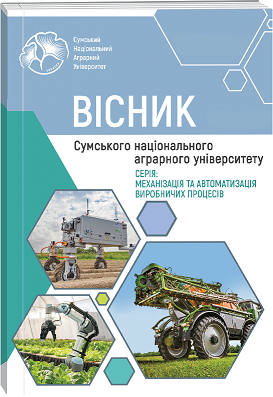USE OF EUROPEAN EXPERIENCE IN DEVELOPING PREVENTIVE MEASURES FOR WORK SAFETY
Abstract
Occupational safety is a key element in ensuring social stability and economic growth. Given Ukraine's integration into the European space, an important task is to implement EU best practices in the field of occupational safety. To solve existing problems in the field of occupational safety, effective interaction of state authorities, the public and business is necessary. An important factor is also the implementation of relevant programs at both the state and local levels aimed at innovative improvement of working conditions, technologization and occupational safety. The implementation of such programs will allow developing and implementing a sound state system of supervisory, educational, methodological, control activities and financing in the field of occupational safety. Solving the problem of scientific, methodological and information support on occupational safety issues at the national, regional and local levels will allow for a comprehensive solution to occupational safety problems, ensuring the priority of the life and health of workers in relation to the results of production activities. In Ukraine, more and more attention is paid to studying European experience in risk prevention, institutional support and training, and a systemic approach to occupational safety, but it is necessary to expand the number of empirical studies on the implementation of these practices at the state level. Preventive measures for occupational safety in Ukraine and the European Union countries are aimed at preventing injuries, occupational diseases, and improving working conditions. Although the approaches have certain differences, they are based on common principles. The article describes the main procedures and scientific and methodological support for the algorithm for developing preventive measures for occupational safety at the state level, which allows for all the main development procedures and obtaining the necessary measures to improve the national occupational safety system, create safe and healthy working conditions in production. The proposed approach is based on an analysis of European experience and contributes to the improvement of the national occupational safety system by addressing methodological issues of a systemic approach to risk assessment, improving the legislative framework, institutional support, social dialogue, and digitalization.
References
2. Hale, A. (2019). Occupational Safety and Health in Europe: Lessons from the Past, Challenges and Opportunities for the Future. Safety Science, (115), 435–445 (in English). https://doi.org/10.1016/j.ssci.2019.01.011
3. Hoffman, S. (2011). Why Institutional Overlap Matters: CSDP in the European Security Architecture. Journal of Common Market Studies, 49(1), 101–120 (in English). https://doi.org/10.1111/j.1468-5965.2010.02131.x
4. Horbatenko, V.P., Batanova, N.M. (2024). Vyklyky ta perspektyvy sotsialnoi derzhavy v Yevrosoiuzi [Challenges and prospects of the social state in the European Union]. Derzhava i pravo: yurydychni i politychni nauky, 95, 150–158 (in Ukrainian).
5. Ivchuk, Yu.Yu. (2013). Okhorona pratsi: mizhnarodni ta yevropeiski vymohy [Occupational safety: international and European requirements]. Aktualni problemy prava: teoriia i praktyka, 26, 55–63 (in Ukrainian). http://nbuv.gov.ua/UJRN/app_2013_26_9
6. Ivchuk, Yu.Yu. (2021). Shchodo pytannia nablyzhennia natsionalnoho zakonodavstva z okhoony pratsi do mizhnarodnykh standartiv u sferi profesiinoi bezpeky, hihiieny pratsi [Regarding the issue of approximation of national legislation on labor protection to international standards in the field of occupational safety and health]. Aktualni problemy prava: teoriia i praktyka, 41, 11–20 (in Ukrainian). https://doi.org/10.33216/2218-5461-2021-41-1-11-20
7. Izuita, P.O. (2014). Dosvid yevropeiskykh krain u sferi okhorony pratsi [Experience of European countries in the field of occupational safety]. Informatsiia i pravo, 2(11), 63–64 (in Ukrainian). https://doi.org/10.37750/2616-6798.2014.2(11).272499
8. Luts, L.A., Nastasiak, I.Yu. (2023). Vidpovidnist suchasnykh zakoniv Ukrainy mizhnarodno-pravovym tsinnostiam: haslo chy realnist [Compliance of modern laws of Ukraine with international legal values: slogan or reality]. Almanakh prava, 14, 145–151 (in Ukrainian). http://jnas.nbuv.gov.ua/article/UJRN-0001437374
9. Pro okhoronu pratsi: Zakon Ukrainy № 2694-XII [On labor protection: Law of Ukraine No. 2694-XII]. Kyiv: Vidomosti Verkhovnoi Rady Ukrainy, 49, 668 (in Ukrainian).
10. Repin, M.V. (2018). Zastosuvannia metodiv stratehichnoho planuvannia dlia rozroblennia profilaktychnykh zakhodiv iz okhorony pratsi [Application of strategic planning methods for the development of preventive measures for occupational safety]. Vcheni zapysky Tavriiskoho natsionalnoho universytetu: Tekhnichni nauky, 29 (68), 13–16 (in Ukrainian). http://www.irbis-nbuv.gov.ua/cgi-bin/irbis_nbuv/2018_29_1(2)__5.pdf
11. Romashchenko, K.M., Romashchenko, T.I., Denysenko, V.O. (2024). Suchasnyi stan ta perspektyvy yevropeiskoi intehratsii Ukrainy [Current state and prospects of European integration of Ukraine]. Visnyk Cherkaskoho natsionalnoho universytetu imeni Bohdana Khmelnytskoho, 28 (1-2), 13–21 (in Ukrainian). https://doi.org/10.31651/2076-5843-2024-1-2-13-21
12. Rotaru, M., Cioca, L. (2024). Summary of the Main Legal Requirements: International Legislative Aspects of Occupational Health and Safety. Occupational Health and Safety, (1), 11–49 (in English). https://doi.org/10.2174/97898151655241240101
13. Tverytnykova, Ye., Demidova, Yu., Drozdova, T. (2021). Management system of occupational safety at Ukrainian enterprises: international and European dimension. Advanced Information Systems, 5(1), 45–53 (in English). https://doi.org/10.20998/2522-9052.2021.1.06
14. Walters, D., Johnstone, R., Bluff, E., Limborg, H., Gensby, U. (2021). Improving Compliance with Occupational Safety and Health Regulations: An Overarching Review. Bilbao: European Agency for Safety and Health at Work, 187 (in English).
15. Walters, D., Johnstone, R., Bluff, E., Limborg, H., Gensby, U. (2022). Prevention services for occupational safety and health in the European Union: Anachronisms or supports for better practice. Safety Science, (152), 105793 (in English). https://doi.org/10.1016/j.ssci.2022.105793
16. Yatskin, V.I. (2013). Dosvid zarubizhnykh krain u sferi derzhavnoho rehuliuvannia problem okhorony pratsi [Experience of foreign countries in the sphere of state regulation of occupational health problems]. Teoriia ta praktyka derzhavnoho upravlinnia, 3, 395–400 (in Ukrainian). http://nbuv.gov.ua/UJRN/Tpdu_2013_3_55

 ISSN
ISSN  ISSN
ISSN 



